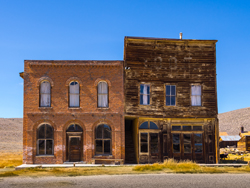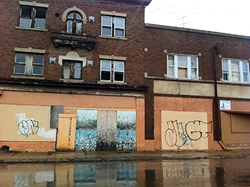City Population Dips Below 50,000 For the First Time in Nearly a Century
For the first time in nearly a century, the population of Niagara Falls has dipped below 50,000, an alarming development that could lead to the loss of as much as $6 million in federal subsidies for the city.
According to the U.S. Census Bureau, the city’s 2012 population was just 49,722, down 471 from the 50,193 reported in 2010.
Meanwhile, the numbers for Niagara County as a whole stayed the same, and some upstate cities such as Utica, Albany and Schenectady actually showed increasing populations.
“I think it’s important to remember that these numbers are only estimates, and we’re hoping to see some hard numbers soon,” Mayor Paul Dyster told the Niagara Falls Reporter. “But our population is not booming and obviously this is a concern.”
If the 2020 census shows the city below the 50,000 number, it could mean the loss of as much as $6 million a year from Housing and Urban Development. It is arguable just how much good that money does anyway since most of it is wasted by a bloated bureaucracy.
Losing it might not make a difference.
It has also been recently argued by several so-called municipal experts in various forums that if Niagara Falls dipped firmly and permanently under 50,000, it could conceivably become a town, and transition over time from a paid to a volunteer fire company, which would save the city about $14 million a year, far offsetting the loss of HUD money.
While some wags have suggested that efforts by this newspaper to rid Niagara Falls of the disproportionate number of dangerous sex offenders living in the city have caused the drop in population, state Sen. George Maziarz said that a decade of rule by Dyster – as mayor and city councilman – and former state assemblywoman Francine DelMonte were actually to blame.
“Whatever they were doing did not work,” Maziarz said.
Niagara Falls peaked at a population of 102,394 in 1960. Last week’s report marks the first time that the city has been below 50,000 since World War I.
Last year, Seth Piccirillo -- the city’s director of community development – launched a program to pay college graduates up to $7,000 to move here.
The plan drew national attention but has done nothing to stem the flow of people out of the city.
"For every 20 you pay for, you have hundreds leaving Niagara Falls. Just look at the population. There's no development here. There's no jobs," Council Chairman Glenn Choolokian said. "Paying people to move here can't conceivably work, even if you had millions. You have to make a place worth living in. Then you won’t have to pay people to live here. They'll pay to get here."
Maziarz agrees.
“You’ve got some of the highest taxes in the country combined with an administration that is notoriously unfriendly to private sector development,” Maziarz said. “That means no jobs. And the people of Niagara Falls are voting with their feet.”



